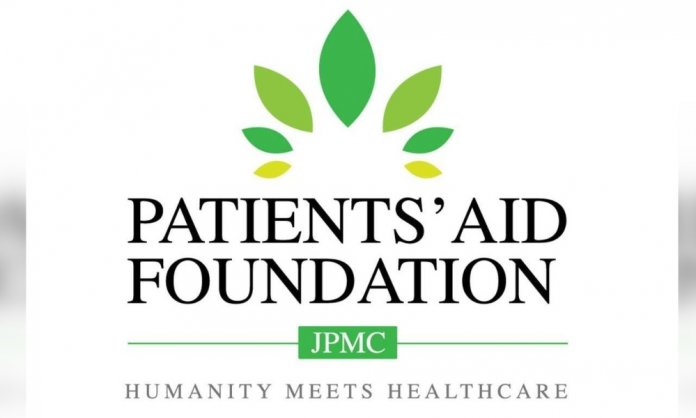Islamabad:- Much of the success and progression of a nation rest mainly on its healthcare sector. Healthcare sector has played a major role in the economic and social development of countries all across the world. For ensuring high and inclusive accelerated growth, a coherent road map and clear policies shall be introduced to improve the healthcare landscape of a country. Pakistan, since the time of independence has struggled with its healthcare system; although it has made few notable breakthroughs. One such initiatives is trying hard to achieve Millennium Development Goals (MDGs) that are set for all developing countries.
But one can’t deny the fact that the health care system in Pakistan is beset with numerous problems, for instance, structural fragmentation, gender insensitivity, resource scarcity, inefficiency, and lack of functional specificity and accessibility. Moreover, it is faced with a precarious economic situation characterized by heavy external debt and faltering productivity, Pakistan’s room to maneuver with health sector reform is quite limited. So, what should be the solution?
The Public-Private Partnership (An Evolving Instrument)
The Public-Private Partnership (PPP) is a phenomenon that has gained popularity in recent times. In the health sector, it is defined as an institutional relationship between the government and the private sector (nonprofit organizations, for-profit private sector, to achieve a shared health-creating goal based on a mutually agreed division of labor and other resources). It provides a window of opportunities and introduces far-reaching changes in the health and social sectors.
Partnering with the private sector gives governments the ability to take advantage of the managerial efficiency, financial diligence and technical innovations.
Experience suggests that involving the private sector has made public sectors efficient and effective. It also brings stronger managerial capacity, access to new technology, and specialized skills that governments cannot afford to develop on their own. It can fill the gaps where governments are slow to respond to demands for the technologically sophisticated infrastructure and services.
The Benefits of Public-Private Partnership (P3s)
Involvement of the private sector ensures that projects and programs are subject to commercial discipline. Public-private partnerships can bring new ideas for designing programs and projects, and greater synergy between the design and operation of facilities. Partnering with the private sector gives governments the ability to take advantage of managerial efficiency, financial diligence and technical innovations. Often, private firms can avoid the bureaucratic problems that plague governments, and they can experiment with new technology and procedures. If we look at the global health scenario, P3s have been most successful in Canada, where they work well with the country’s single-payer health system. According to the Canadian Council for Public and Private Partnerships (CCPPP), P3s offer a number of advantages over traditional financing by providing viable options for other health care infrastructure in the face of limited government and philanthropic funds.
The combination of public interest with private-sector research and development, P3s have injected new life into stalled projects and delivered innovative solutions to numerous industries – especially healthcare.
The Dominance of Private over Public Sector
The private health sector has grown phenomenally in response to deficiencies in government health services. Availability of quality staff and medicines, 24/7 services, latest equipment, accessible locations, and cordial patient handling, all have earned the private sector a loyal clientele. The private sector boasts a substantial share of the blood bank, routine laboratory and X-ray services, and in some provinces, ambulance services too resultantly, the private healthcare sector is outperforming the public healthcare sector in terms of service quality and patient satisfaction.
Having said that, one can’t deny the fact that Pakistan is a developing country and most of its population is formed of lower income groups. Millions of needy patients exist that cannot afford the luxury of being treated at private health institutes. So, the question is what should be done to meet the collective health targets of the masses? The solution isn’t that complex, it is very important to create public private partnerships and with the support of benevolent philanthropists, the investments should be made more in the public owned institutions so the deserving patients can get respective treatments.
Patients’ Aid Foundation – Humanity Meets Healthcare
One of the successful examples of such a partnership is the Patients’ Aid Foundation (PAF), which is a non-profit organization, formed by a group of concerned citizens in 1990. With a vision to alleviate the burden on Jinnah Postgraduate Medical Centre (JPMC) and to provide free and quality healthcare to thousands of patients walking through its gates every day. Through this private-public partnership, PAF is trying build back on the lost glory of JPMC which is struggling with the ever increasing number of patients against its limited resources. With best-in-class facilities and an encouraging staff, PAF has reshaped JPMC and improved its healthcare landscape. Patients’ Aid Foundation has been relentlessly serving the citizens with its motto of ‘humanity meets healthcare’ for over two decades.
Such partnerships in the health sector can ease the burden on the government and also ensure quality healthcare services are introduced as a basic human right. Hopefully, we will see many such partnerships for a better and healthier future.











































